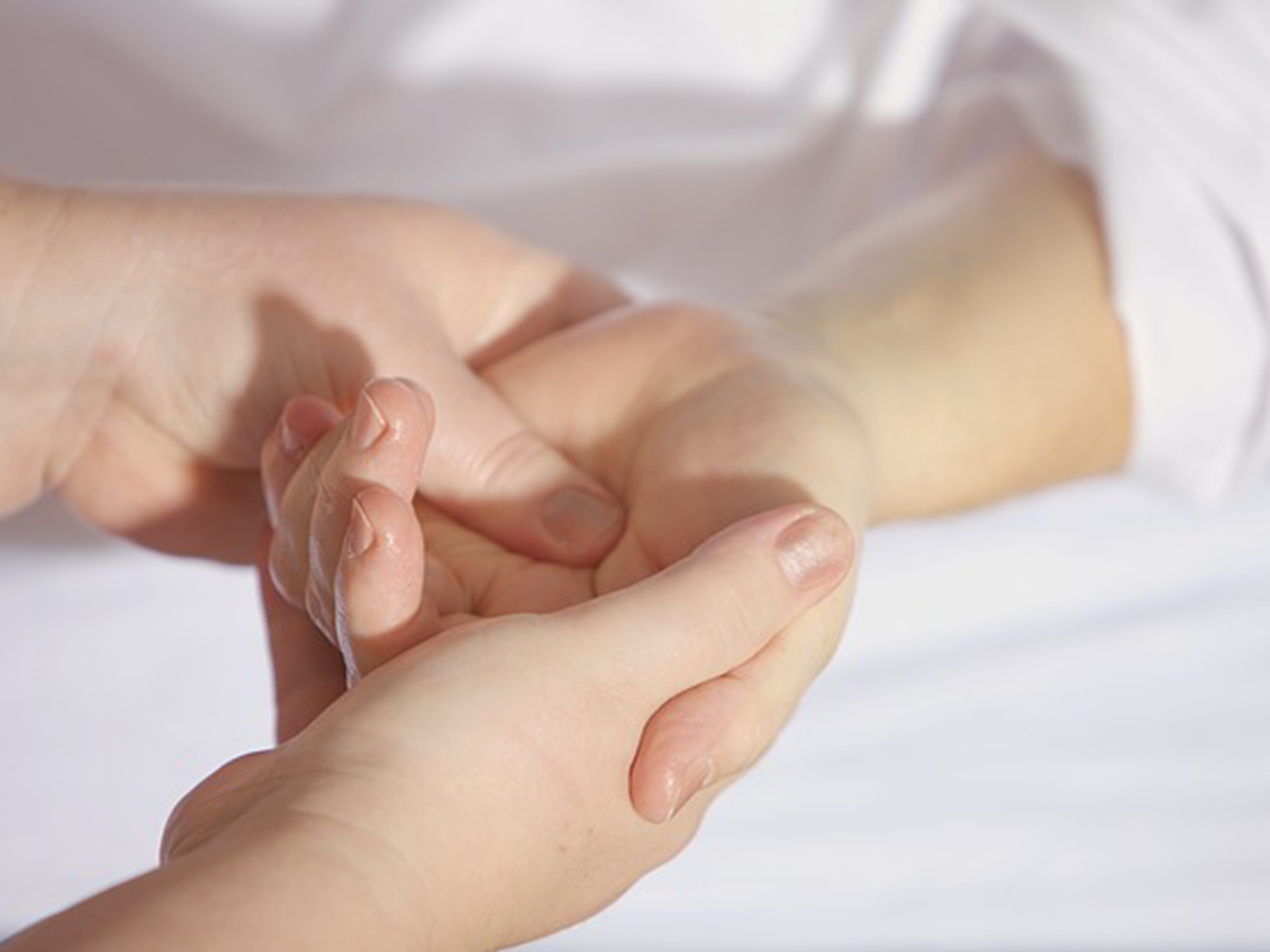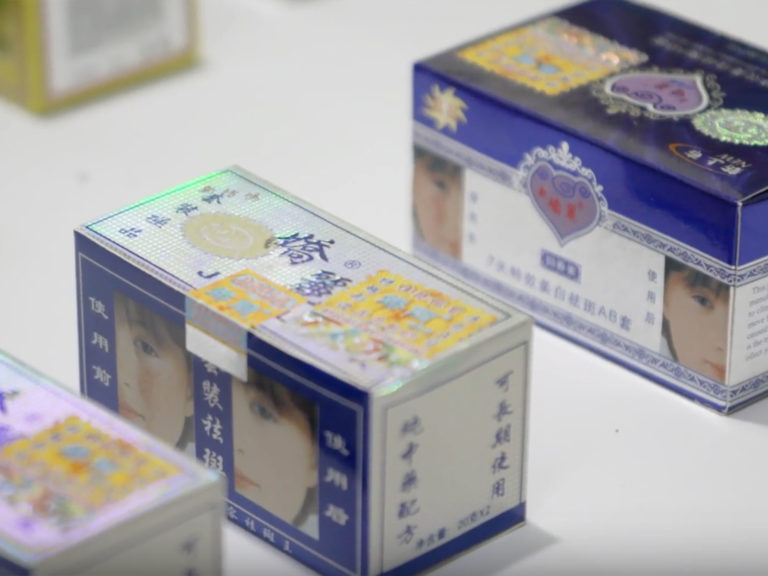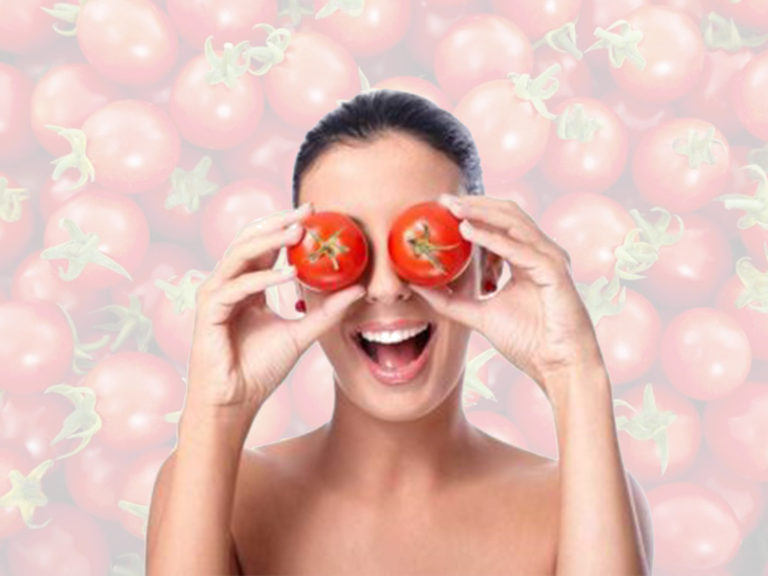Skin Whitening FAQ

Got any skin questions? Here are some of the most common questions that our readers usually ask.
What is hyperpigmentation?
What is skin lightening?
How does skin lightening work?
What is exfoliation?
Do all skin lightening ingredients work the same?
Is skin lightening safe?
What is kojic acid?
Is there a difference between lightening your face and lightening your body?
Is daily use of sunscreen safe?
What is oxybenzone?
Should I wear sunscreen daily, even when I’m indoors?
Why do you prefer Japanese sunscreens?
Does skin with melasma require extra strong UVA and UVB protection?
How do you calculate the PPD (UVA Rating) of your sunscreen?
Do you use all the products on the blog?
What is your opinion on glutathione?
Why are you so against monobenzone?
What is your opinion on hydroquinone?
What is hyperpigmentation?
An increase in melanin production is hyperpigmentation. There are numerous factors that can increase the production of melanin. Two of the principal instigators are inflammatory compounds and oxidative chemicals, such as free radicals. These can be from external stressors like skin trauma or injury (including from acne) and UV radiation. Some elements stimulating the production of melanin include hormonal changes. Others are hereditary factors such as darker skin types and diseases such as diabetes. Still others are certain medications like birth control pills and antibiotics.
Due to the higher melanin content of those who have darker skin types (Fitzpatrick types III-VI), they have a greater tendency for developing hyperpigmentation. This occurs for a longer time, which is also hard to manage.
Common forms of hyperpigmentation
Skin tanning, solar lentigenes like sun spots or age spots are common forms of hyperpigmentatin. Another is acanthosis nigricans which is darkened, leathery-textured skin found at the back of the neck, underarms, or groin. Others are melasma, ephelides (freckles), and red, brown, or purple marks left behind from acne. Various forms of hyperpigmentation are close to the epidermis and/or dermis. If the hyperpigmentation is present in the epidermis, it tends to have tan, red, brown, or dark brown patches. Lesions present in the deeper layer of the skin typically have a blue-grey appearance and are notoriously hards to treat.
The increase in the production of melanin following skin inflammation (through injury or trauma) is post-inflammatory hyperpigmentation (PIH). Melanocyte activity is by inflammatory substances like cytokines and prostanoids in the epidermis. And within the deeper skin layer, huge amounts of melanin displace to the injury. This result from the inflammatory damage to skin cells. Examples of PIH are more pigmentation as a result of acute sun exposure and skin trauma. This trauma comes from chemical peels, contact dermatitis, or atopic dermatitis and acne.
What is skin lightening?
Skin lightening includes products, regimens and techniques that help correct and avoid hyperpigmentation which also lightens the existing skin tone. Here are the three principles of skin lightening:
1. Protects
It protects the skin from melanin stimulation and UV-induced DNA damage. This is by wearing broad-spectrum sunscreen every day and avoiding too much sun exposure.
2. Exfoliates
It removes existing melanin in the skin by sufficiently and smoothly exfoliating. Exfoliation allows for greater penetration of skin lightening active elements and encourages an even complexion.
3. Treats
It prevents the development of future melanin by means of quality skin lightening products that stops melanogenesis.
How does skin lightening work?
It uses ingredients that actively decrease existing melanin while preventing the development of new melanin. That’s how skin lightening works.
This can be a tough task as melanocytes are continuously producing melanin. The solution is to stick to the three principles of skin lightening as mentioned above.
It is essential for skin lightening to protect the skin from harmful UV rays. UV rays can cause DNA damage, which stimulate melanin production that further leads to the development of hyperpigmentation. The ideal form of defense against UV-induced pigmentation is wearing a sunscreen (with chemical or physical filters) every day.
What is exfoliation?
Once skin has protection, it breaks down existing melanin with the use of exfoliants. These are in the form of alpha hydroxyl acids such as lactic acid and glycolic acid. These acids stimulate the peeling of the outer layer of skin cells. This then allows new, fresh cells with less melanin to come to the surface faster.
Moreover, high strength glycolic acid and lactic acid (i.e. chemical peels) have an inhibitory effect on melanocytes. This further helps spread melanin granules in the epidermis.
Retinoids can also help in breaking up of excess melanin.
To hinder future melanin production, elements that directly target different points of melanogenesis are ideal. Two of the main points of melanogenesis are tyrosinase (enzyme) creation and melanocyte to keratinocyte transfer. If tyrosinase stops, melanogenesis cannot go on. Ingredients consist of:
Niacinamide – melanocyte to keratinocyte transfer inhibitor
Arbutin – tyrosinase inhibitor
Kojic Acid – tyrosinase inhibitor
ChromaBright – tyrosinase inhibito
Rumex Extract – tyrosinase inhibitor
Licorice Extract – tyrosinase inhibitor
Resorcinol – tyrosinase inhibitor
Do all skin lightening ingredients work the same?
The answer is no. Various skin lightening ingredients work through different procedures to lighten skin.
Alpha hydroxy acids like lactic and glycolic acid breaks up excess put melanin in the skin. This is through via stimulating outer layer skin shedding. Ingredients which avoid future formation of melanin do so by aiming 2 major points of melanogenesis. One is through tyrosinase creation and melanocyte to keratinocyte transfer. Some ingredients can inhibit tyrosinase (dangerous enzyme in melanin synthesis). On the other hand, they have dissimilar ways to do so. For instance, hydroquinone has a cytotoxic effect (inducing cell death) on melanocytes. On the other hand, kojic acid suppresses catecholase activity of tyrosinase. Some ingredients inhibit the enzyme greater than others, such as resorcinol. These are greater at inhibiting tyrosinase over kojic acid, arbutin, and hydroquinone.
What is the difference between skin brightening, skin lightening and skin whitening?
Skin brightening, skin lightening and skin whitening are merely marketing terms targeted towards various demographics. For instance, the term skin whitening is mainly in East Asia. The term “skin brightening” or “skin lightening” are more usually terms in the West (North America and Europe). All of these three have the same goal and businesses use these terms interchangeably constantly.
Is skin lightening safe?
Skin lightening regimens and ingredients are not only very safe. They are also extremely helpful to the skin even when going beyond the treatment of pigmentation concerns. Most skin lightening ingredients are able to treat multiple skin care matters. Additionally, a skin lightening regimen is a form of excellent skin care practice. The main rule of skin lightening is to protect the skin from the sun, through diligent sunscreen usage. Wearing sunscreen all year round is not just one of the great defenses against premature skin aging. This can also prevent skin cancer.
There are some ingredients which can be problematic in most skin care niches. For instance, hydroquinone can allow abuse. Hydroquinone brings about a cytotoxic effect on cells (cell death) which, ironically, is how it lightens the skin. Dermatologists recommend no longer than 6 months of using hydroquinone. Theynormally restrict its usage to localized forms of hyperpigmentation to prevent complications such as rebound hyperpigmentation. Hydroquinone can also cause a bad side effect on darker skin types known as ochoronosis. This is the exacerbation of hyperpigmentation on the skin.
What is kojic acid?
Another skin lightening ingredient is Kojic acid. It can possibly create problems due to its skin sensitizing effects – even at low concentrations. Dermatologists typically recommend using kojic acid in cycles every 3 months with other skin lightening ingredients.
Is there a difference between lightening your face and lightening your body?
Money would be a main difference between the two. Looking for skin lightening products that are both economical in price and size, which can cover huge surface areas such as those on the body, are hard because it depends on the size of the area where you are applying treatment. Usually in large areas such as the whole body, it is not wise to use a skin lightening product for the face. This is due to the fact that the product will consume rapidly. It is great to mix skin lightening products with AHA body lotions (AmLactin) or bland body moisturizers to work around this concern.
Is daily use of sunscreen safe?
Most chemical and physical sunscreens are safe to use every day. One of the main concerns over sunscreens stem from the use of nano-form physical sunblock elements (i.e. zinc oxide, titanium dioxide). They have the possibility to enter into the bloodstream. Luckily, this allegation has rejection by many in vivo studies. These studies show that physical sunblock nanoparticles do not enter into deeper layers of skin, and instead, stay in the outer layers.
However, there is a concern over the use of zinc oxide/titanium dioxide nanoparticles in makeup products and sunscreen sprays. When they are into these kinds of products, there is a possibility of inhalation. Trace amount or not, the long-term inhalation of physical sunblock nanoparticles have unidentified consequences.
What is oxybenzone?
One more common concern is on the welfare of the chemical sunscreen filter, oxybenzone. The concern extends to the possibility to disrupt the endocrine system. When put to human skin, oxybenzone gets into the skin but goes out by the urine. Since the volume of oxybenzone present in sunscreens is pretty low, there is no need to worry about it in adult skin. On the other hand, there is some possible danger in applying this to the skin of children under the age of 2. This is because they lack the needed enzymes necessary to break down oxybenzone by-products in the body. It is great to avoid the use of oxybenzone on kids under the age 2 totally, as well as in nursing and pregnant women.
Should I wear sunscreen daily, even when I’m indoors?
If possible, yes you should. Sunscreen (with wide spectrum protection) is the best guard against UV damage and skin darkening. The sun damage is cumulative and can appear years later. It can also come in as little as 10 minutes of defenceless exposure. Put a sunscreen you feel comfortable wearing daily, rain or shine. If it is on a chemical, apply it on 15 minutes before you go out.
Those with melasma should be careful about day-to-day sunscreen usage, even when indoors. This is because certain ways of indoor lighting (i.e uncovered fluorescent bulbs) can affect or worsen the condition.
Why do you prefer Japanese sunscreens?
Japanese sunscreens have transformed my skin and my opinion on sun protection. All other sunscreens from Europe, Canada, and the US pale in comparison to the lightweight, matte finish of Japanese sunscreens. This is due to its use in excessive humid weather. Most of them use a combination of physical and chemical sunscreen ingredients.
As somebody with oily skin, water-resistant and alcohol-based Japanese sunscreens are essential, because they are both oil-controlling and mattifying.
Cosmetic elegance is significant but so is sun protection. Japanese sunscreens provide the best of both worlds.
Does skin with melasma require extra strong UVA and UVB protection?
Definitely yes! You should certainly look into European-brand sunscreens like La Roche Posay, Vichy , Bioderma, and Avene sunscreens if you have melasma. They provide great PPD (UVA) and SPF (UVB) protection. If you have very sensitive melasma, don’t play around with high PPD sunscreens.
How do you calculate the PPD (UVA Rating) of your sunscreen?
Dissimilar demographics use different systems to calculate the UVA protection feature of their sunscreens. For instance, European sunscreens use the PPD rating system while Japanese sunscreens use the PA (+++) system.
A lot of companies feature the PA (+++) or PPD rating straight out of the product labels. For those that do not, you can measure the PPD rating using the BASF Sunscreen Simulator. The BASF Sunscreen Simulator is an outstanding tool which offers a sound estimation of the sunscreen UVA protection. Just plug in the numbers on the platform and you will get a rating based on many demographics!
Do you use all the products on the blog?
The entire purpose of Bright White Skin is to showcase products that are popular or up-to-date. This site is informative for those who have interest in learning about numerous skin lightening products. In many cases, I use these products and in those cases, I usually do a product review.
I’m not using most of the products featured on the blog. Nor do their entitlements represent my view in any way. On the other hand, I’m trying my best to feature high-quality products. These products are made by trustworthy companies. They are with excellent ingredients that provide to a variety of individuals with different concerns.
What is your opinion on glutathione?
Glutathione cannot do anything since it is such an unbalanced antioxidant (far more than L-ascorbic acid).There is new research showing that oxidized glutathione can lighten the skin topically. Verbally, most of the benefits from glutathione have damage in the digestive process.
IV injections of glutathione do embrace some promise. This can be risky though and I highly suggest to those who are interested to look for a professional (i.e. Naturopath). Don’t ever purchase an IV glutathione skin lightening product online.
Why are you so against Monobenzone?
I am definitely not totally against monobenzone. I just don’t promote the use of it as an all-over skin lightener. It is a highly cytotoxic element. This product was initially made for vitiligo patients who require aid in hastening the depigmentation process.
It was never meant for healthy skin. Most persons who use monobenzone products as skin lighteners, usually acquire them from illegal vendors. This is a prescription -only ingredient that has strict rules. But if you want to use it for localized hyperpigmentation, please refer to a dermatologist.
What is your opinion on hydroquinone?
Hydroquinone is effective for skin lightening, but it carries some dangers and has some limitations. Dermatologists mainly prescribe hydroquinone for treating local injuries of hyperpigmentation as opposed to total brightening.
Hydroquinone lightens the skin by hindering the activity of tyrosinase. It increases the cytotoxicity of melanocytes (killing the cells which create melanin). The latter action happens through the growth of free radical oxidation. This frequently results in not uneven lightening of the skin.
Risks of hydroquinone
Those with darker skin tones using hydroquinone run the danger for evolving a rare condition called ochronosis. This is a further darkening of the skin. The risks for developing this unbelievably disfiguring and stubborn-to-reverse side effect further intensify with combined use of the ingredient Resorcinol. This can also be intensified by extended use of hydroquinone, and with the use of concentrations above 4%. Besides from its possibly problematic effect on darker skin tones, hydroquinone itself can be cruel on the skin. It has a high possibility to cause allergic reactions in skins that are sensitive.
Because of its reactive nature and vagueness regarding its long-term use, hydroquinone is best used in a little time frame, normally 4 months. Once the 4-month mark is done, users should switch to non-hydroquinone based skin lightening ingredients, which are far harmless and have been shown in many circumstances to be superior at lightening the skin over hydroquinone.
We hope you have enjoyed reading our answers. If you have anything else to ask, don’t hesitate to contact us!




Pingback: Penis Whitening: Is It Effective? - Bright White Skin